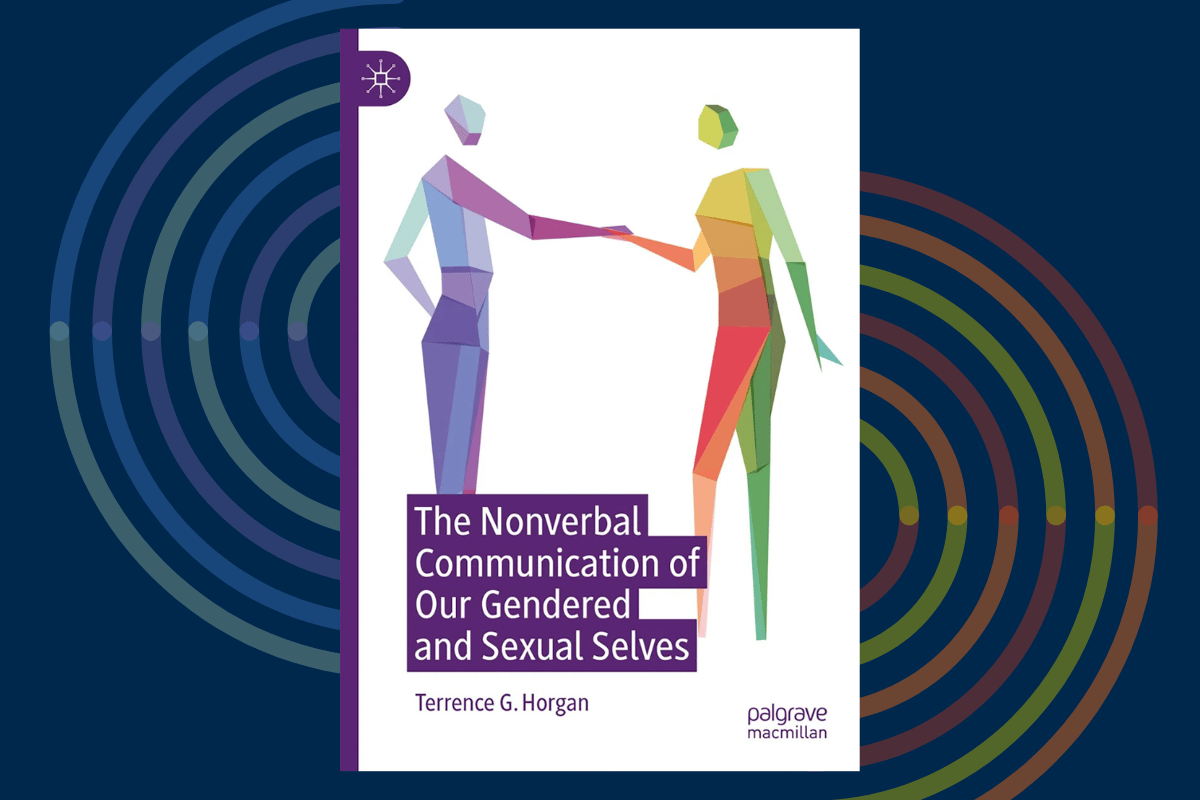UM-Flint's Horgan explores nonverbal communication of gender and sexuality in new book

Do people nonverbally communicate their gender identity and sexual orientation to others? How about their sexual and romantic interests? Terrence Horgan, Myron and Margaret Winegarden Professor and professor of psychology at the University of Michigan-Flint, answers these questions in his latest book, "The Nonverbal Communication of Our Gendered and Sexual Selves."

"I have always been fascinated by how people express their gender identity and sexual orientation, particularly in nonverbal ways," said Horgan. "Some of these nonverbal cues (to gender and sexual orientation) were a mystery to me, which inspired me to write this book."
In his new book, Horgan explores these topics through a modern lens, addressing heteronormative assumptions about nonverbal expressions of sexual interest balanced by research on people's lived experiences—including those of gay, straight and bisexual individuals. According to Horgan, using this modern lens makes this book unique.
Horgan begins the book by introducing nonverbal communication and its terminology, then defines his model for nonverbal encoding. People nonconsciously send nonverbal cues that appear static to others, such as their bodily shape and dress. People also consciously transmit dynamic nonverbal cues to others, such as when they gaze and smile at someone they like.
The most challenging chapter for Horgan to write is on nonverbal expressions of gender and biological sex, primarily because many theories and research findings explore the intersection between biological sex and the social construction of gender.
One overriding question is whether biological or evolutionary forces, social factors or some combination of the two drive gender differences in nonverbal behavior. For example, is women's superior ability in reading others' nonverbal cues related to sex differences in the human brain or to how girls and boys are socialized?
Horgan reported that the question about the origin of gender differences in nonverbal behavior might not matter in the future. "Artificial Intelligence models currently in development are sophisticated enough to read nonverbal cues more accurately than some humans can," he said.
Moreover, he stressed the importance of "degendering" nonverbal skills. For instance, instead of treating empathic concern as a more "feminine" quality, it can be viewed as an essential individual quality, given its potential relevance to both men and women in particular occupations (e.g., clinical psychologists).
AI also plays a role in Horgan's analysis of research related to nonverbal communication of sexual orientation. Can people guess someone's sexual orientation based on the nonverbal cues (e.g., facial features and expressions) they see from them (i.e., gaydar)? Existing research shows that the human gaydar is not very good.
"AI, on the other hand, has about a 70% success rate of identifying the sexual orientation of people based solely on their photograph, which is astounding," Horgan said. "And also deeply concerning, especially given the legal and social repercussions that they (i.e., LGBTQIA+ people) might face in many parts of the world."
As Horgan explored the research on sexual orientation through a modern lens, he found that some folks find it challenging to maintain their identities fully in the eyes of others.
"Bisexual women … are assumed to be heterosexual if they're partnered with a man and lesbian if they're partnered with a woman," he said. So, how do they communicate their bisexual identity? According to Horgan, they may dress themselves or decorate their homes in ways that communicate their bisexuality to others. Moreover, because of the prevalence of prejudice and discrimination toward bisexuality, Horgan notes that there also is the question of "how they can safely communicate their identities to others."
Horgan continues his analysis by investigating the nonverbal cues we use to communicate both sexual and romantic interests. He tackles assumptions among laypeople and experts alike regarding how the sexual-interest phase of courtship begins for heterosexuals.
Laypeople are inclined to think that men express sexual interest first. However, research shows otherwise: Women tend to send nonverbal cues of interest to a particular man (eye contact, smiles), permitting him to approach. Experts, on the other hand, tend to underplay men's use of nonverbal cues, such as displays of status and power, which encourage women to begin signaling their willingness to be approached.
Of all the findings in his book, Horgan found issues concerning consent to be the most disturbing.
"Not resisting a person's sexual advances may be interpreted as a consent-granting nonverbal cue," said Horgan. Yet, nonverbal cues have more ambiguous meanings than people realize. Because the non-responding person may not internally feel like having sex, the initiator could simply ask them if they want to have sex.
Horgan concludes "Nonverbal Communication of Our Gendered and Sexual Selves" by identifying current research gaps.
"The final chapter on Limitations and Future Directions could also be called 'WEIRD Research and WEIRD Researchers!' Weird as in Western, Educated, Industrialized, Rich and Democratic," he said. "Most of the research that I reviewed and analyzed was on (or conducted by) people who live in these societies, so that's certainly a limitation of the book. I hope my work will inspire others to explore nonverbal communication styles within their cultural setting and help us expand our understanding of this vital topic."
Digital copies of "Nonverbal Communication of Our Gendered and Sexual Selves" are available for the general public and University of Michigan affiliated persons via two options:
- Community: Available for purchase here
- U-M: Available for free through the Thompson Library
Related Posts
No related photos.
Kat Oak
Kat Oak is the communications specialist for the College of Arts, Sciences, and Education. She can be reached via email at katheroa@umich.edu.